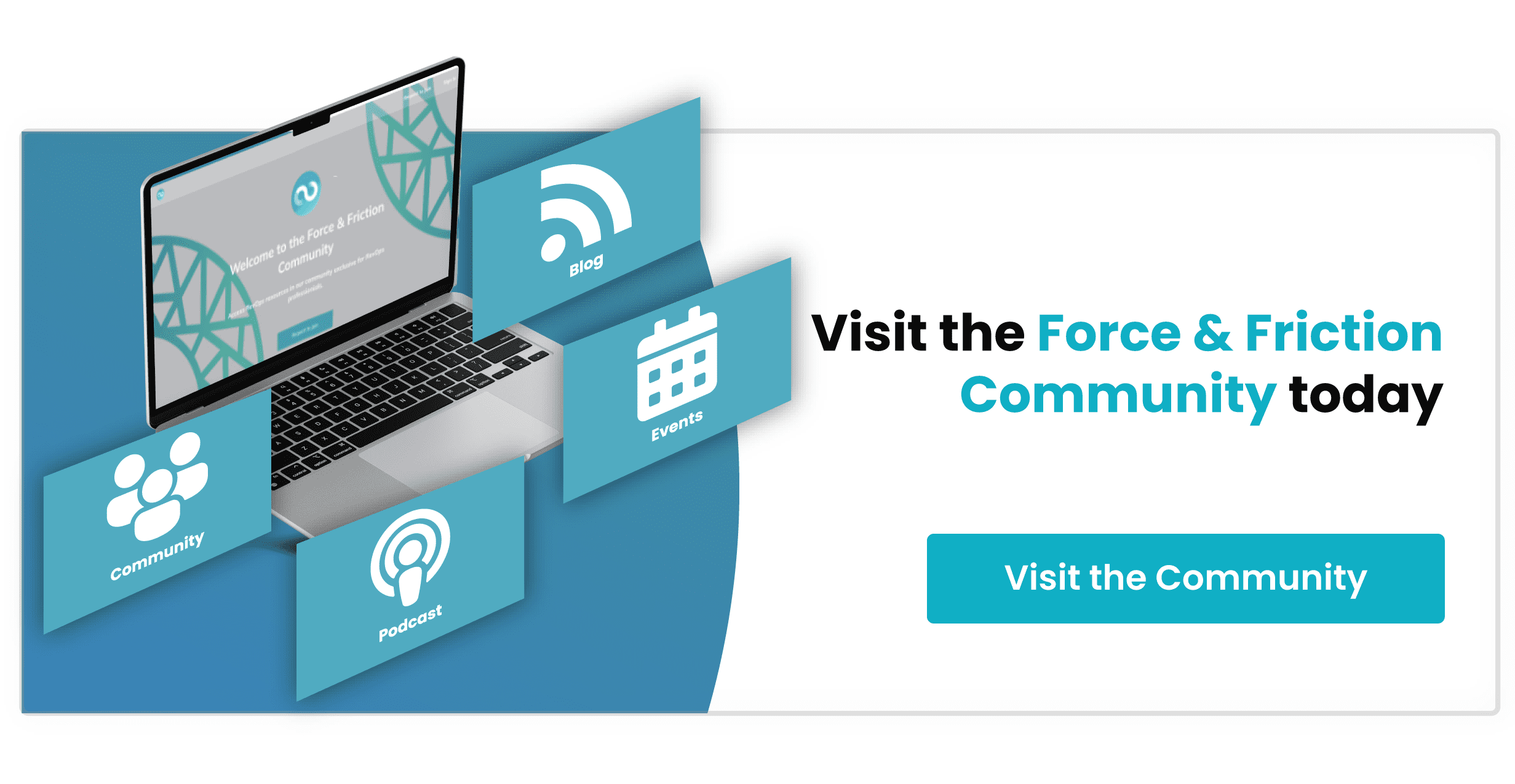
Mastering the Numbers Game: Key Metrics for Every Department in Your Organization | #RevOpsLife
We are surrounded by data, and for many do we either know what we are looking at, or what to do with it when we can interpret it, when I work with C Suites usually they are strong in data, however, one or both of these are applicable when we work cross-functional in Revenue teams. Meaning they are very siloed.
Board meetings/reports can become overwhelming as data is poured over, and time is wasted discussing confusing metrics.
I find that teams who can identify and monitor the right key numbers across their entire organization are thrones that get ahead of the data curve and are destined for growth, efficiency, and overall success.
How can you establish and track specific metrics? There are many systems however focussing on key revenue growth metrics in each department is a great start to elevate primary metrics, but a single metric is rarely enough around a data point. Later in this post, I'll cover the six components of predictable performance, a methodology introduced by Databox.
Whichever way you adopt your data evaluation, the benefits are endless and include being able to optimize decision-making and ensure that your team remains aligned with your business objectives.
In this RevOpsLife article, I’ll discuss the importance of key numbers and provide practical examples for the departments of marketing, sales, customer success, finance, people, operations, and data evaluation metrics for you to cross-reference in your own business,
Disclaimer: I know every business has a unique or niche-specific operating system, and data rules so these should be considered as examples for you and your team to use as a benchmark starting point and adapt as required.
1: Marketing Metrics:
Whilst obvious, monitoring marketing metrics is vital for assessing the effectiveness of your marketing strategies and campaigns, I’m surprised often with how poor many high-growth organizations are at focusing on the REAL numbers, while vanity metrics are making a comeback based on google algorithms, there are still core metrics that when measured and optimized correctly can make real marginal and greater gains.
Tracking some of these key metrics will also provide valuable insights into customer preferences and behavior, enabling you to tailor your messaging and strategies to better resonate with your target audience.
-
Cost Per Lead (CPL)
-
Conversion Rate
-
Return on Marketing Investment (ROMI)
-
Website Traffic
-
Organic Search Traffic
-
Social Media Engagement
-
Email Open and Click-Through Rates
-
Customer Acquisition Cost (CAC)
-
Marketing Qualified Leads (MQL)
-
Sales Qualified Leads (SQL)
-
Lead Value Delivered $
2: Sales Metrics:
With the right quality leads flowing, keeping track of sales metrics is crucial for measuring the performance of your sales team and ensuring that revenue targets are met.
By examining metrics such as sales growth, lead-to-customer conversion rate, and average sales cycle length, you can identify areas of strength and opportunities for improvement within your sales process. Tracking some of these key metrics will help your sales team stay focused, motivated, and aligned with your organization's overall goals.
-
Sales Growth
-
Lead-to-Customer Conversion Rate
-
Average Sales Cycle Length
-
Win Rate
-
Average Deal Size
-
Quota Attainment
-
Sales Pipeline Coverage
-
Time to First Contact
-
Sales Rep Productivity
-
Revenue per Sales Rep
-
Sales Velocity Value Per Rep
3: Customer Success Metrics:
We know it's far more cost-effective to retain a customer over winning a new one, the importance of customer success metrics cannot be underestimated, and are essential for understanding the satisfaction and loyalty of your customers.
By tracking metrics such as customer retention rate, net promoter score, and customer lifetime value, you can gain insights into how well your organization is meeting customer needs and expectations. A strong focus on customer success metrics with examples below will help you identify areas for improvement in your customer experience, leading to higher satisfaction, reduced churn, and increased long-term revenue.
-
Customer Retention Rate
-
Net Promoter Score (NPS)
-
Customer Lifetime Value (CLV)
-
Customer Churn Rate
-
First Contact Resolution (FCR)
-
Average Resolution Time
-
Customer Effort Score (CES)
-
Customer Support Ticket Volume
-
Customer Satisfaction Score (CSAT)
-
Upsell/Cross-Sell Rate
-
Customer Referral Rate
4: Finance Metrics:
The holy grail of business is finance - without it not much is feasible so financial metrics provide an invaluable perspective on the health and profitability of your organization.
By analyzing metrics such as gross profit margin, operating cash flow, and quick ratio, you can gain a deeper understanding of your organization's financial performance and stability. Regularly tracking these metric examples will enable you to make strategic decisions about investments, cost management, and risk mitigation to ensure the continued growth and success of your business.
-
Gross Profit Margin
-
Operating Cash Flow
-
Quick Ratio
-
Current Ratio
-
Debt-to-Equity Ratio
-
Return on Assets (ROA)
-
Return on Equity (ROE)
-
Earnings Before Interest, Taxes, Depreciation, and Amortization (EBITDA) Margin
-
Operating Expense Ratio
-
Days Sales Outstanding (DSO)
5: People Metrics:
It is impossible for businesses to really scale without people, one of an organization's biggest assets, and in some cases, they can become toxic and liabilities, creating a great culture is one thing but ensuring everyone has a number is essential with Revenue Operations - getting your people metrics right will help you assess the overall health and effectiveness of your organization's human resources.
By monitoring metrics such as the examples below and employee turnover rate, time to hire, and employee engagement score, you can identify trends and patterns in employee satisfaction, productivity, and retention. Investing in people metrics will help your organization create a positive work environment, attract top talent, and cultivate a high-performing team.
-
Employee Turnover Rate
-
Time to Hire
-
Employee Engagement Score
-
Cost per Hire
-
Training and Development Investment per Employee
-
Revenue per Employee
-
Employee Net Promoter Score (eNPS)
-
Diversity and Inclusion Metrics
-
Performance Review Completion Rate
-
Absenteeism Rate
6: Operations Metrics:
Your operations metrics are crucial for evaluating the efficiency and effectiveness of your organization's processes and systems, its ability to deliver what is sold and how your overall organization operates.
By tracking metrics such as capacity utilization, inventory turnover, and order fulfilment time, you can pinpoint areas for improvement and implement changes to optimize productivity. A strong focus on operations metrics like the examples below will help your organization streamline processes, reduce costs, and improve overall performance.
-
Capacity Utilization
-
Inventory Turnover
-
Order Fulfillment Time
-
Overall Equipment Effectiveness (OEE)
-
On-Time Delivery Rate
-
First Pass Yield (FPY)
-
Cycle Time
-
Throughput
-
Work-in-Progress (WIP) Inventory
-
Downtime
7: Data Metrics:
Data data data….. Data metrics are essential for ensuring the quality, accessibility, and usefulness of your organization's data. Ignore data at your peril, in centuries gone by it was focused on gold (maybe it still is a timeless asset), then oil, now in the 21st century the value is in the data.
Monitoring metrics such as data accuracy, data accessibility, and data processing time, you can identify and address issues that may be hindering your team's ability to make informed, data-driven decisions. Investing in data metrics will help your organization leverage data as a strategic asset, driving innovation, efficiency, and growth.
-
Data Accuracy
-
Data Accessibility
-
Data Processing Time
-
Data Storage Utilization
-
Data Security Compliance Rate
-
Data Privacy Compliance Rate
-
Data Integration Quality
-
Data Maturity Level
-
Data Governance Effectiveness
Introducing predictable Performance by Databox
Predictable performance is the concept of using historical data and trends to anticipate and forecast future performance, enabling organizations to make data-driven decisions and optimize their operations proactively.
At 6teen30 Digital we are Databox Premier Partner, their tools allow data visualization and reporting, it plays a crucial role in helping our RevOps clients achieve predictable performance by providing real-time insights into key metrics and trends across various departments and processes. You can take their free training here.
Predictable Performance is focused on six key metric identifiers:
1: Outputs
2: Outcomes
3: Leading Outcomes
4: Lagging Outcomes
5: Quantitative, and
6: Qualitative
Using Databox Dashboards, we build our RevOps and ROaaS (revenue operations as a service) clients a series of databox boards that are built on the predictable performance methodology, this allows our clients to monitor and analyze various types of metrics across their different revenue areas/teams, here's a few examples to get you started in thinking about how you can take metrics beyond just the result, and apply the predictable performance methodology to your own key numbers.
Predictable Performance Marketing Metric Examples:
-
Outputs: Number of marketing campaigns, blog posts published, or social media posts.
-
Outcomes: Conversion rate, click-through rate, or return on marketing investment (ROMI).
-
Leading Outcomes: Organic website traffic, social media engagement, or email open rate.
-
Lagging Outcomes: Customer acquisition cost (CAC), cost per lead (CPL), or marketing-qualified leads (MQLs).
-
Quantitative: Marketing budget, website traffic sources, or email click-through rate.
-
Qualitative: Customer feedback on marketing campaigns, brand sentiment, conversion lead quality
Predictable Performance Sales Metric Examples:
-
Outputs: Number of sales calls, meetings, or proposals sent.
-
Outcomes: Revenue growth, average deal size, or win rate.
-
Leading Outcomes: Sales pipeline value, number of opportunities, or lead-to-customer conversion rate.
-
Lagging Outcomes: Sales cycle length, time to close, or quota attainment.
-
Quantitative: Total revenue, number of closed deals, or number of upsells and cross-sells.
-
Qualitative: Customer feedback on the sales process, sales team's effectiveness, & deal quality, or customer satisfaction with the sales experience.
Predictable Performance Customer Success Metric Examples:
-
Outputs: Number of support tickets resolved, customer check-ins, or onboarding sessions.
-
Outcomes: Customer retention rate, customer satisfaction score (CSAT), or net promoter score (NPS).
-
Leading Outcomes: Customer usage metrics, support ticket response time, or customer engagement.
-
Lagging Outcomes: Customer churn rate, customer lifetime value (CLV), or customer expansion revenue.
-
Quantitative: Number of active users, support ticket resolution time, or customer health score.
-
Qualitative: Customer feedback on product or service, customer testimonials, retention and revenue growth $ / % or success story case studies.
Predictable Performance Finance Metric Examples:
-
Outputs: Financial reports generated, budget allocations, or invoices processed.
-
Outcomes: Gross profit margin, operating cash flow, or return on investment (ROI).
-
Leading Outcomes: Monthly recurring revenue (MRR), annual recurring revenue (ARR), or revenue growth rate.
-
Lagging Outcomes: Days sales outstanding (DSO), quick ratio, or EBITDA margin.
-
Quantitative: Total expenses, cash reserves, or revenue by product or service.
-
Qualitative: Investor or stakeholder feedback, risk assessment, or financial stability perceptions.
Predictable Performance People Metric Examples:
-
Outputs: Number of employees hired, training sessions conducted, or performance reviews completed.
-
Outcomes: Employee turnover rate, employee engagement score, or time to hire.
-
Leading Outcomes: Job offer acceptance rate, employee referrals, or internal promotion rate.
-
Lagging Outcomes: Absenteeism rate, voluntary turnover rate, or employee satisfaction score.
-
Quantitative: Number of open positions, employee demographics, or average employee tenure.
-
Qualitative: Employee feedback on company culture, work-life balance, or job satisfaction.
Predictable Performance Operations Metric Examples:
-
Outputs: Number of projects completed, process improvements implemented, or system upgrades performed.
-
Outcomes: Capacity utilization, inventory turnover, or order fulfilment time.
-
Leading Outcomes: System uptime, process efficiency, or preventive maintenance completion rate.
-
Lagging Outcomes: Error rate, process compliance, or bottleneck analysis.
-
Quantitative: Total production output, number of units produced, or resource utilization.
-
Qualitative: Employee feedback on operational efficiency, process improvement suggestions/improvements, or stakeholder /client satisfaction with operations.
Predictable Performance Data Metric Examples:
-
Outputs: Number of data sources integrated, data cleansing tasks completed, or data reports generated.
-
Outcomes: Data accuracy, data accessibility, or data processing time.
-
Leading Outcomes: Data collection rate, data storage capacity, or data pipeline performance.
-
Lagging Outcomes: Data quality issues, data governance compliance, or data breach incidents.
-
Quantitative: Data volume, data processing speed, or a number of data-driven insights generated.
-
Qualitative: Feedback on data visualization, user satisfaction with data tools, GDPR compliance, Reduction in cyber, and stakeholder opinions on data reliability.
Conclusion:
Start with data first, not last….one of the first things we do with new client onboarding is getting their data understood and shaped and ready to be evaluated, it guides our strategic direction right from the get-go.
By focusing on actionable, goal-oriented metrics, blended with the predictable performance you can optimize your decision-making and drive revenue growth.
I recommend you involve the head of each department in the process, as their ownership and commitment to these metrics will be crucial for success and usually linked to the performance management and remuneration.
By incorporating these key numbers into your RevOps strategy, your organization will be well-equipped to navigate the data-driven landscape and achieve lasting success.
I understand that every business is unique and may require a more personalized approach to its RevOps data key numbers strategy.
That's why we offer consultation services to help you tailor your strategy to your specific needs through our GamePlan RevOps workshops.
Our team of experts have been creating RevOps strategies since 2016 and have decades of experience in business data evaluation, all to help you accelerate your efforts to achieve your revenue goals faster and more efficiently.
Book a consultation with us today and let's get started on creating a winning RevOps strategy together!







%20-%20Teal.png?width=500&height=130&name=Force%20%26%20Friction%20-%20Branding%20-%20Logo%20(White)%20-%20Teal.png)